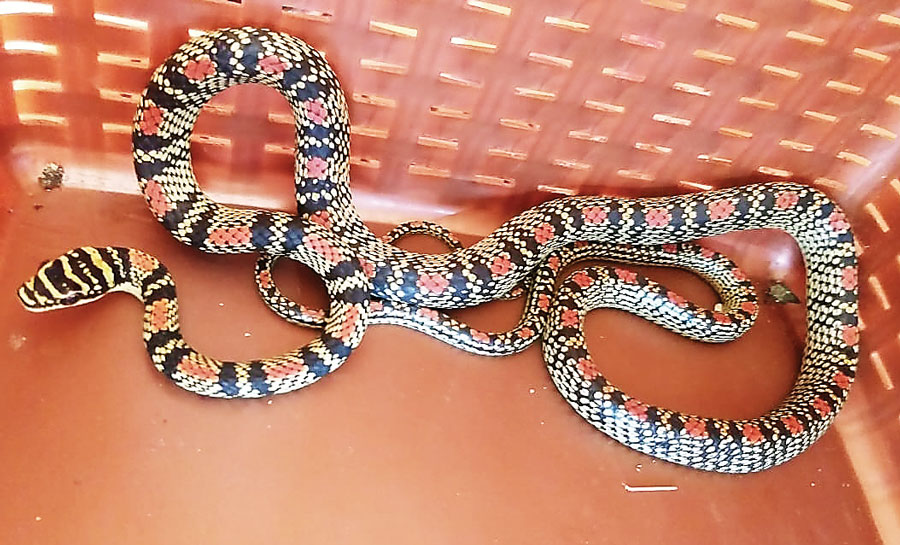Malpe: Rare gliding snake visits the city!
02:25PM Mon 1 Apr, 2019

Malpe: Secluded to its habitat in the Western Ghats, the rarely found jumping golden tree snake was recently found at the premises of a hotel in Malpe and created much curiosity among the localites here.
The binomial nomenclature of the snake ‘Chrysopelea Ornata’ and is called the golden tree snake in English. The snake moves in between trees by gliding or parachuting.
It is said that the attractively coloured snake was found in the vegetable basket of a hotel in Malpe. The people in the hotel contacted Babu Salian, a snake lover from Malpe who arrived at the hotel, caught the snake and handed it over to herpetologist Gururaj Sanil. Later, Gururaj safely released the snake into the realms of the Western Ghats.
Arboreal serpent
The snake mostly leaves on trees and is a diurnal reptile and moves from tree to tree by gliding or parachuting down to other trees. The snake can grow to a maximum length of one-and-a-half meters. In comparison to the males of the species, the females are larger in size. The snakes are usually green in color, with black cross-hatching and yellow or gold colored accents. The colour and pattern on their body also works as a camouflage for the snake in the wild, either for hunting prey or to hide from predators.
How did it come from the Malnad to Karavali?
In his several years of work with the snakes, this is the first time that he witnessed this snake in Malpe area, says Gururaj. Te tree which is mostly limited to the tree tops is rarely, if not never seen in Karavali areas.
The snake might have accidentally ended up within a vegetable vehicle passing through the Malnad when it was attempting to glide from one tree to another. Thus, carried amidst the vegetables, the snake must have reached the hotel from the vegetable shop, presumes Gururaj.
Non-venomous snake
“Looking at the colour of the snake, it should not be considered to be venomous. It is a non-venomous snake. Out of confusion some might consider the snake to be a Kraite, which is venomous and try to kill it. The snake mostly survives on small arboreal prey, such as lizards, bats, small rodents and might also feed on bird eggs and insects. The snake is oviparous, with its mating season lying in the months of March-April and lays 6-12 elongated eggs in the months of June-July,” explained Gururaj Sanil, Herpetologist
Source: Udayavani











